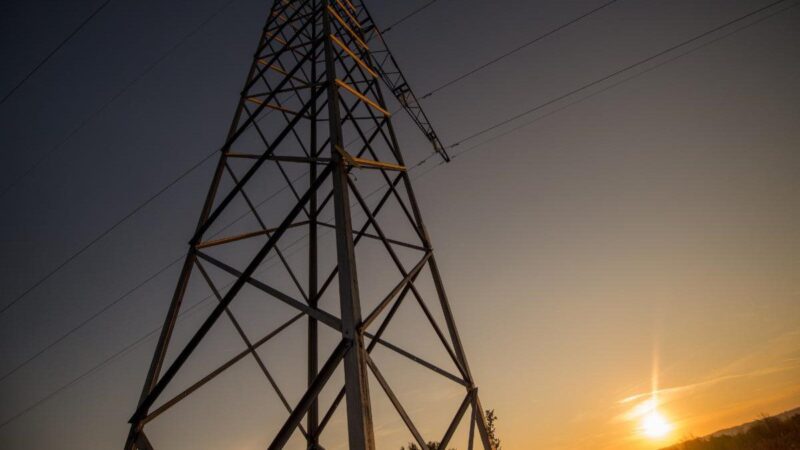Editor’s Note: The following story first appeared in The Maine Monitor’s free environmental newsletter, Climate Monitor, that is delivered to inboxes for every Friday morning. Sign up for the free newsletter to get important environmental news by registering at this link.
You may have read last week that Maine’s highest court issued a long-awaited opinion related to the Canadian hydro-powered transmission line that Central Maine Power hopes to build in Western Maine. In this case, CMP owner Avangrid sued the state over a voter referendum approved in 2021 that sought to block the project.
This the latest in a long line of updates that leave this story in almost the same limbo as it was before. To me, that’s what makes this kind of project such a useful window onto how complex, controversial and time-consuming it can be in practice to address climate change and move off of fossil fuels at the largest, most impactful scales. We have little time to waste — but these projects, and the democratic processes surrounding them, simply don’t happen overnight.
The state Supreme Court (known in Maine as the Law Court) was asked to help clarify the “questions of law” presented by the referendum case. In response, they ruled that it would only be unconstitutional for the referendum to retroactively block the corridor if CMP has attained “vested rights” to proceed — basically, that the project is so far along, it would be unconstitutional to pull the plug now.
This “vested rights” question has long been at the center of this case. Now the Superior Court is poised to answer it — but there’s no timeline yet for when that might happen. Whatever their decision, the losing side is likely to appeal the case straight back to the Law Court.
Here are a few issues to consider in the meantime:
First, CMP was able to get a lot of construction done on its 143-mile route before this court drama began late last year. In the new opinion, the Law Court recounts that between Jan. 18, 2021 and that November, when the utility voluntarily agreed to pause construction, CMP “cut approximately 124 miles of right-of-way for direct current lines, cleared the entire corridor for the alternating current line, erected transmission structures along the corridor, and prepared the converter station site.”
The utility is also under a court order to hold off work on the 0.9-mile public lands segment of the project, near West Forks — but only until a separate Law Court case related to state oversight of those lands is resolved. That case focuses on whether the state Bureau of Public Lands did its due diligence in deciding the corridor would not “substantially alter” that parcel. Whenever that ruling comes out, the court could say BPL fell short on this and direct them to have to revisit the issue. BPL could then reaffirm CMP’s right to build on the contested site, or change their mind, which would send the issue for legislative approval. Most of these outcomes could also lead to court appeals.
But this all relates to less than a mile of the project — an area which CMP has claimed it could route around. The larger potential impact comes from the Superior Court’s now-pending look at the project’s vested rights. If that court decides the project hasn’t earned those, then the voter referendum effectively kicks in, blocking the corridor from the entire “Upper Kennebec Region” and requiring legislative approval for any use of public lands. This would require a much, much more substantial reroute, which would almost surely lead to regulatory skirmishes of its own.
So this is CMP’s position as it looks to a deadline of next year to finish the power line in time to help Massachusetts meet its statutory climate goals (remember, the electrons that flow down the line will be shared throughout New England, with the Bay State only footing the bill). Besides putting a clock on the whole thing, it’s a reminder of what’s at stake, if only in terms of the corridor’s potential to supplant the planet-warming natural gas power plants that predominate on the region’s grid. Maine itself is taking aggressive steps to reach net-zero emissions by 2045.
To that end, there is yet another new twist for CMP on the horizon. On Nov. 1, the Maine Public Utilities Commission is due to decide the winners of a request for proposals to build transmission and renewable energy projects in Aroostook County. If the winning line is big enough, it will be subject to the high bar of legislative approval enacted by the corridor-targeted voter referendum — but with a roughly equal amount of clean energy promised, it still poses a potential competitor for Massachusetts to turn to should the CMP project seem in doubt again.
To read the full edition of this newsletter, see The CMP corridor saga marches on… and on and on.
Annie Ropeik has been given the keys to the Climate Monitor newsletter while its regular author, the Monitor’s environmental reporter Kate Cough, is on leave until November. Reach Annie with story ideas at: aropeik@gmail.com.





